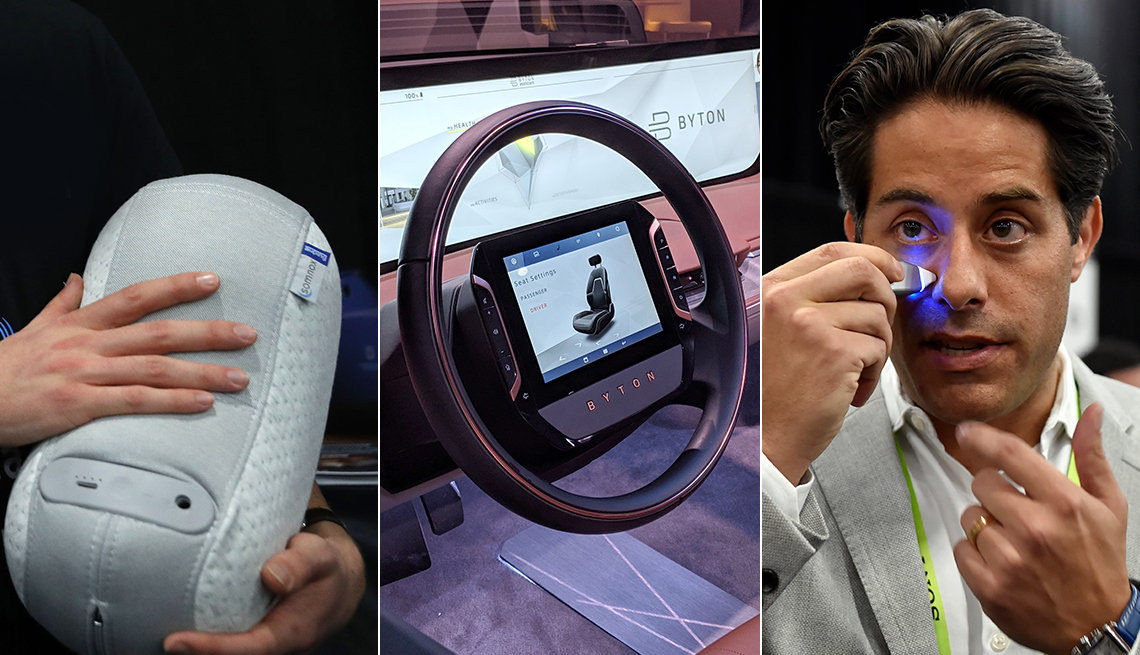Staying Fit
If a flying taxi, a self-driving wheelchair and an unmanned vehicle delivering your dinner sound futuristic, you may be surprised by the innovations that will be on display in Las Vegas this week.
From smart fabrics to smart homes, from robots to virtual reality, the wares on display at CES — the consumer electronics trade show that is the largest tech exhibition in the world — are designed to show you the benefits of tomorrow’s technology today. This annual four-day gathering of electronics companies and techies can be so mind-boggling that to get to sleep after all-day excitement, you may need a Bluetooth-connected, temperature-controlled smart pillow to decompress.


AARP Membership— $12 for your first year when you sign up for Automatic Renewal
Get instant access to members-only products and hundreds of discounts, a free second membership, and a subscription to AARP the Magazine.
For tech and entertainment news, plus more, get AARP’s monthly Lifestyle newsletter.
Some 4,400 companies will be exhibiting, and about 182,000 people from 160 countries are expected to attend, according to the Arlington, Va.-based Consumer Technology Association (CTA), which sponsors the show.
“We literally sell out every hotel room in Vegas. The city can’t hold more than we bring,” said CTA spokesman Justin Siraj. He said the early buzz is focused on the evolving uses of both artificial intelligence and fifth-generation cellular networks, or 5G, which will speed up mobile internet speeds.
Manufacturers are also exploring how to use technology to improve the lives of older Americans. As the country’s population ages — by 2035, adults age 65-plus are expected to outnumber children, according to the Census Bureau — innovations aimed at the health, wellness, safety and vitality of adults 50-plus are proliferating.
“Digital health is going to be a huge narrative this year … and it’s beyond [wearable devices] this year,” said Lesley Rohrbaugh, director of research at the CTA.

































































